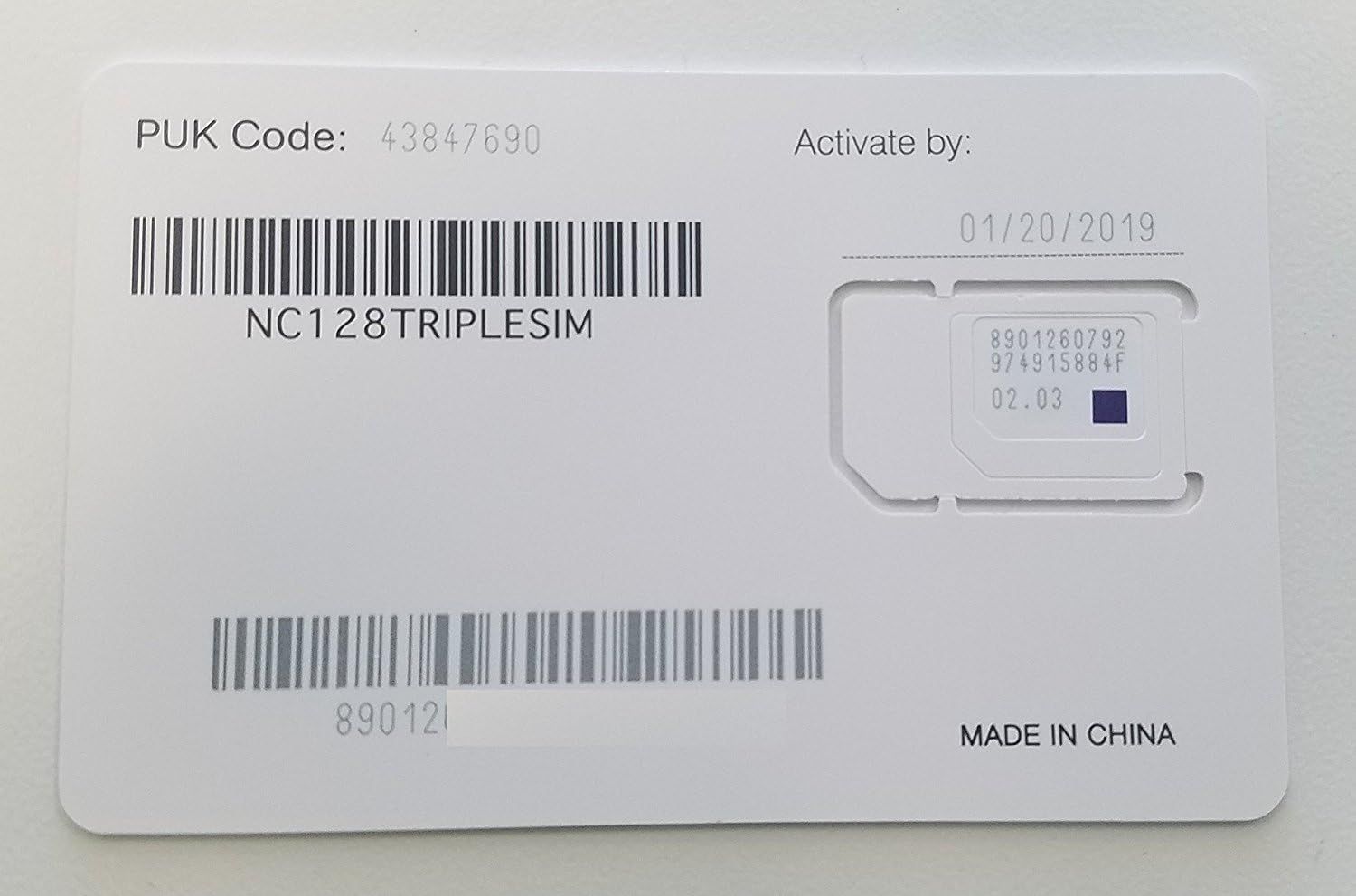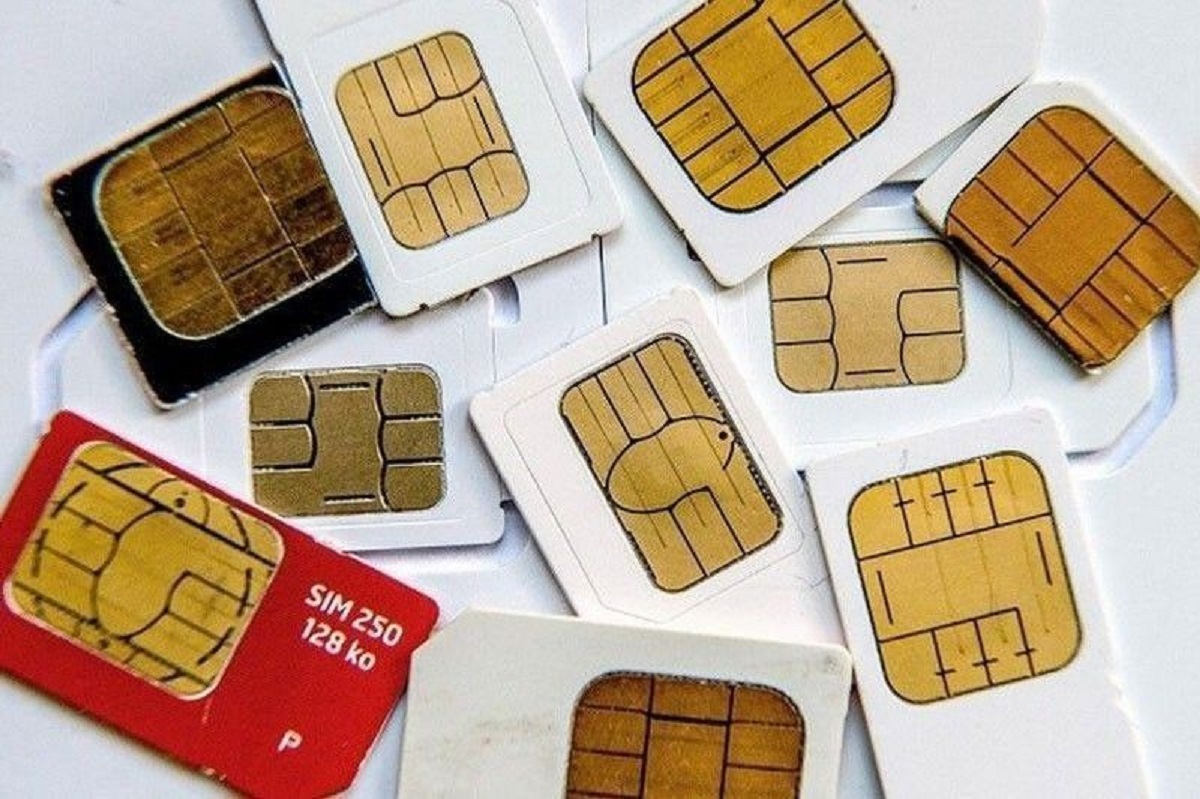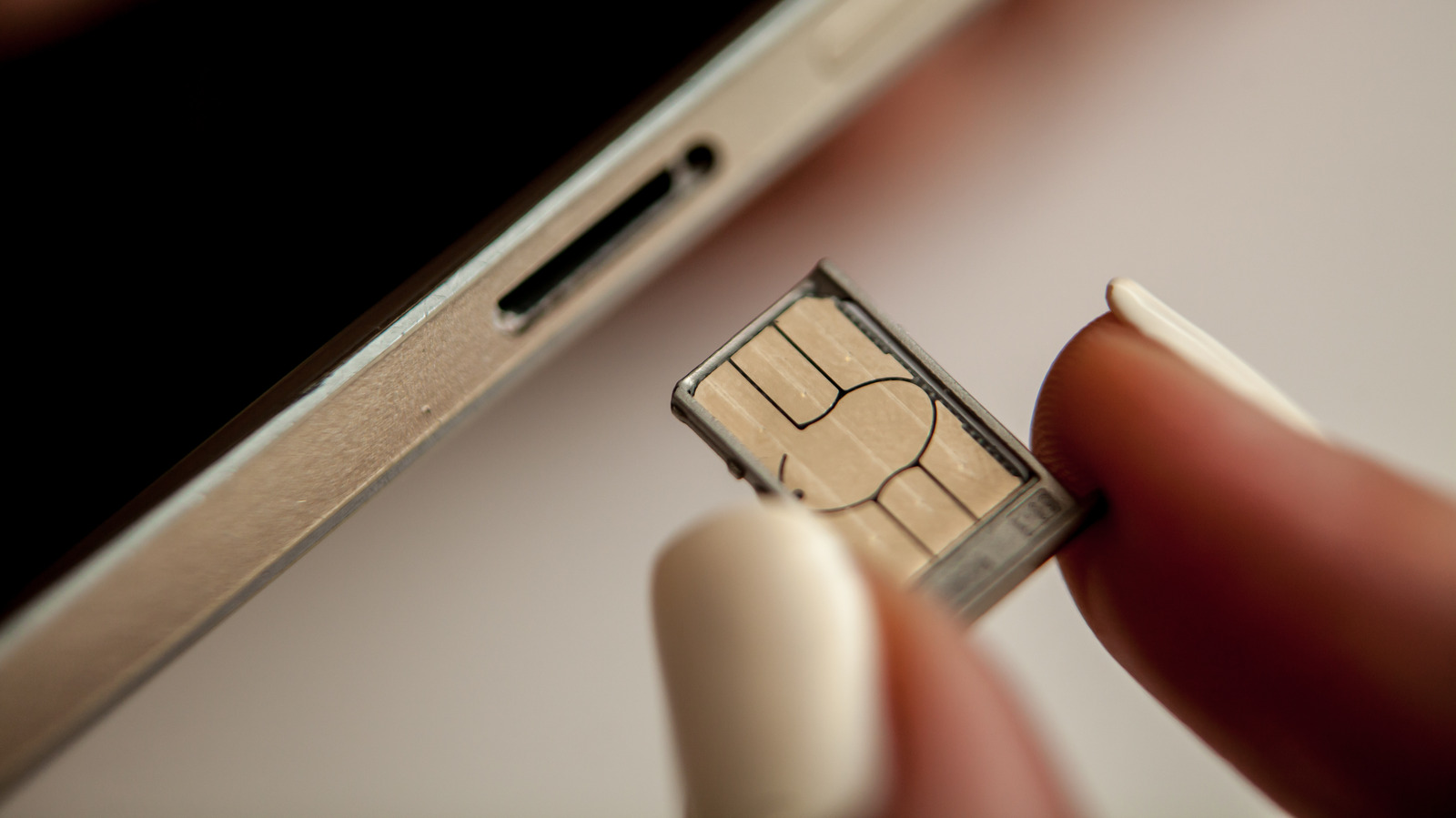Introduction
Replacing a SIM card is a common occurrence in the ever-evolving landscape of mobile technology. Whether prompted by a desire to upgrade to a new device, switch to a different carrier, or address technical issues, the decision to replace a SIM card can have far-reaching implications. Understanding the impact of this seemingly simple act is crucial for anyone seeking to make an informed decision about their mobile device and network connectivity.
The humble SIM (Subscriber Identity Module) card, a small but essential component of modern mobile devices, plays a pivotal role in enabling communication and data access. As technology continues to advance, the impact of replacing a SIM card extends beyond mere logistical considerations. It encompasses aspects such as data and contacts, security, and device compatibility, all of which warrant careful consideration before embarking on this endeavor.
In this article, we will delve into the multifaceted implications of replacing a SIM card, shedding light on the potential ramifications for users. By exploring the reasons for replacing a SIM card and the subsequent impact on data, contacts, security, and device compatibility, we aim to provide a comprehensive understanding of this process. This knowledge will empower individuals to navigate the complexities of mobile device management with confidence and clarity.
The decision to replace a SIM card is not one to be taken lightly, as it can influence the seamless functioning of a mobile device and the safeguarding of personal data. By examining the implications of this action, we can equip ourselves with the insights necessary to make informed choices in the dynamic realm of mobile technology.
What is a SIM Card?
A SIM (Subscriber Identity Module) card is a small, removable chip that is integral to the functioning of mobile devices. Serving as the link between the device and the mobile network, the SIM card securely stores essential information, including the user's unique identity, network authorization data, and personal contacts. This tiny yet powerful component is synonymous with connectivity, enabling users to make calls, send messages, and access mobile data services.
The SIM card contains vital details that identify the user to the mobile network, allowing for seamless communication and data access. It holds the International Mobile Subscriber Identity (IMSI), a unique number that distinguishes one user from another within the network. Additionally, the SIM card stores the Integrated Circuit Card Identifier (ICCID), a distinct serial number that identifies the SIM card itself.
Furthermore, the SIM card houses the authentication key, which is crucial for verifying the user's identity and ensuring secure access to the mobile network. This authentication process is fundamental to the integrity of mobile communications, safeguarding against unauthorized access and fraudulent activities.
In addition to facilitating network connectivity, the SIM card serves as a repository for the user's contacts and personal information. By storing contact numbers, messages, and other user data, the SIM card ensures that essential information remains accessible even when switching devices. This portability of data is a key feature of SIM cards, allowing users to seamlessly transition between different mobile devices while retaining their personal contacts and messages.
Moreover, SIM cards come in various form factors, including the standard SIM, micro-SIM, and nano-SIM, each catering to different device requirements. The evolution of SIM card technology has seen a shift towards smaller form factors, enabling compatibility with increasingly compact and sleek mobile devices.
In essence, the SIM card is the linchpin of mobile connectivity, embodying the user's identity, network access privileges, and personal data. Its compact design belies its significance, as it plays a pivotal role in enabling seamless communication and data access for mobile device users worldwide.
Reasons for Replacing SIM Card
There are several compelling reasons that may prompt individuals to consider replacing their SIM card. Understanding these motivations is essential for making informed decisions regarding mobile device management and network connectivity.
-
Device Upgrade: One common reason for replacing a SIM card is the acquisition of a new mobile device. When transitioning to a new smartphone or tablet, it is often necessary to install a compatible SIM card to ensure seamless connectivity. This is particularly relevant when upgrading to a device that requires a different SIM card form factor, such as transitioning from a device that utilizes a standard SIM to one that necessitates a nano-SIM.
-
Carrier Switch: Individuals seeking to change their mobile network provider may opt to replace their SIM card to align with the new carrier's network specifications. Whether motivated by competitive pricing, improved network coverage, or enhanced service offerings, switching to a different carrier often entails obtaining a new SIM card tailored to the selected network.
-
SIM Card Damage: Physical damage to a SIM card, such as bending, scratching, or exposure to moisture, can compromise its functionality. In such instances, replacing the damaged SIM card becomes imperative to restore seamless connectivity and ensure the integrity of network access.
-
Network Compatibility: Certain mobile devices are designed to operate on specific network technologies, such as GSM or CDMA. When transitioning to a device that operates on a different network standard, replacing the SIM card may be necessary to align with the new device's compatibility requirements.
-
Lost or Stolen SIM Card: In the unfortunate event of a lost or stolen SIM card, replacing it becomes essential to prevent unauthorized access to the user's mobile network services and personal data. Promptly replacing the SIM card mitigates the risk of unauthorized usage and safeguards the user's network privileges.
-
Technical Issues: Instances of network connectivity issues, including poor signal reception or inability to connect to the mobile network, may necessitate replacing the SIM card. This proactive measure can address underlying technical issues related to the SIM card and restore seamless access to mobile services.
Understanding the diverse reasons for replacing a SIM card underscores the dynamic nature of mobile device management and network connectivity. Whether driven by device upgrades, network transitions, technical concerns, or security considerations, the decision to replace a SIM card carries significant implications for users seeking to optimize their mobile experience.
Impact on Data and Contacts
The replacement of a SIM card can have a profound impact on the management and accessibility of data and contacts stored on a mobile device. As the SIM card serves as a repository for personal contacts and messages, as well as a conduit for mobile data services, the decision to replace it warrants careful consideration of its implications on data integrity and contact portability.
When a SIM card is replaced, the data stored on the previous SIM card, including contacts, messages, and network-specific settings, is not automatically transferred to the new SIM card. This transition necessitates proactive measures to safeguard and migrate essential data to ensure continuity of communication and access to vital information.
In the context of contacts, the impact of replacing a SIM card is particularly salient. The SIM card traditionally stores contact information, enabling users to retain their personal contacts even when switching devices. However, when replacing the SIM card, it is imperative to ensure that the contacts stored on the old SIM card are backed up and transferred to the new SIM card or an alternative storage location, such as the device's internal memory or a cloud-based platform. Failure to execute this transfer may result in the loss of valuable contact information, disrupting communication and impeding seamless access to essential connections.
Moreover, the replacement of a SIM card can influence the accessibility and management of messages and network-specific settings. Users may need to reconfigure network settings and ensure that messages stored on the previous SIM card are appropriately backed up and migrated to the new SIM card or an alternative storage medium. This proactive approach is vital for preserving important messages and ensuring uninterrupted communication during the transition to the new SIM card.
Furthermore, the impact of replacing a SIM card extends to the management of mobile data services. As the SIM card is instrumental in facilitating access to mobile data, its replacement may necessitate reconfiguring data settings and ensuring seamless integration with the new SIM card and mobile network. Users should be mindful of potential data transfer limitations and network-specific requirements when replacing a SIM card, as these factors can influence the continuity of data access and network connectivity.
In essence, the impact of replacing a SIM card on data and contacts underscores the importance of proactive data management and migration strategies. By prioritizing the backup and transfer of essential data, including contacts, messages, and network settings, users can mitigate the potential disruptions associated with SIM card replacement and ensure the seamless continuity of communication and data access.
Impact on Security
The replacement of a SIM card introduces significant implications for the security of the user's mobile communications and personal data. As the SIM card serves as a key authentication mechanism for accessing the mobile network, its replacement necessitates a thorough evaluation of the security considerations inherent in this process.
One of the primary security implications of replacing a SIM card is the potential exposure to unauthorized access and fraudulent activities. The SIM card plays a pivotal role in authenticating the user's identity and authorizing access to the mobile network. When replacing the SIM card, it is essential to safeguard against unauthorized attempts to exploit this transition for illicit purposes. This includes ensuring that the new SIM card is securely obtained from a reputable source and activated in a manner that mitigates the risk of unauthorized network access.
Moreover, the replacement of a SIM card underscores the importance of safeguarding against SIM card cloning and fraudulent SIM swaps. These malicious activities seek to replicate the user's SIM card information or fraudulently transfer the user's mobile number to a different SIM card, enabling unauthorized access to the user's network services and personal data. By exercising vigilance during the SIM card replacement process and implementing additional security measures, such as activating SIM card lock features, users can fortify their defenses against potential security breaches.
Furthermore, the impact of replacing a SIM card extends to the integrity of mobile communication encryption and network authentication. As the SIM card plays a crucial role in establishing secure communication channels and authenticating the user's identity within the mobile network, its replacement necessitates a reassessment of the encryption keys and security protocols associated with network access. Users should prioritize the verification of security measures implemented by the new SIM card and the mobile network provider to ensure the continuity of robust security safeguards.
Additionally, the replacement of a SIM card underscores the imperative of securing personal data and sensitive information stored on the mobile device. As the SIM card may contain network-specific authentication data and access credentials, its replacement demands a meticulous approach to safeguarding against potential data breaches and unauthorized access attempts. Users should consider implementing additional security measures, such as encryption protocols and device passcodes, to fortify the protection of personal data in conjunction with the SIM card replacement process.
In essence, the impact of replacing a SIM card on security necessitates a comprehensive approach to mitigating potential vulnerabilities and safeguarding against unauthorized access and fraudulent activities. By prioritizing security-conscious practices and leveraging additional security measures, users can navigate the SIM card replacement process with heightened vigilance and fortify the security posture of their mobile communications and personal data.
Impact on Device Compatibility
The replacement of a SIM card can exert a significant impact on the compatibility of the mobile device with the chosen network and communication technologies. As the SIM card serves as a fundamental link between the device and the mobile network, its replacement necessitates a comprehensive evaluation of the device's compatibility with the new SIM card and the associated network specifications.
One of the primary considerations regarding device compatibility pertains to the form factor of the SIM card. With the evolution of mobile technology, SIM cards have transitioned from the standard SIM to the more compact micro-SIM and nano-SIM form factors. When replacing a SIM card, it is essential to ensure that the new SIM card aligns with the form factor requirements of the mobile device. This compatibility consideration is particularly pertinent when transitioning to a new device that necessitates a different SIM card form factor, as the seamless integration of the SIM card with the device's SIM card slot is integral to ensuring uninterrupted network connectivity.
Moreover, the impact of replacing a SIM card extends to the device's compatibility with network technologies and frequency bands. Different mobile networks operate on distinct technologies, such as GSM (Global System for Mobile Communications) or CDMA (Code Division Multiple Access), each with its specific compatibility requirements. When replacing a SIM card, users must ascertain that the new SIM card aligns with the network technology supported by the device, ensuring seamless integration and optimal network performance. Additionally, considering the frequency bands utilized by the mobile network is crucial, as compatibility with the frequency bands supported by the device is essential for reliable network connectivity and data access.
Furthermore, the impact of replacing a SIM card on device compatibility encompasses considerations related to network-specific features and services. Certain mobile networks offer specialized features, such as VoLTE (Voice over LTE) and Wi-Fi calling, which require device compatibility to enable seamless utilization. When replacing a SIM card, users should verify the compatibility of the device with these network-specific features, ensuring that the new SIM card facilitates the utilization of advanced communication services without compatibility constraints.
In essence, the impact of replacing a SIM card on device compatibility underscores the necessity of ensuring seamless integration between the mobile device, the new SIM card, and the chosen mobile network. By prioritizing compatibility considerations related to SIM card form factor, network technologies, frequency bands, and network-specific features, users can navigate the SIM card replacement process with confidence, optimizing device compatibility and network connectivity.
Conclusion
The process of replacing a SIM card is not merely a routine technical task; it encompasses a myriad of implications that resonate throughout the user's mobile experience. From the fundamental role of the SIM card in enabling communication and data access to the intricate considerations of device compatibility and security, the decision to replace a SIM card carries far-reaching significance.
In conclusion, the impact of replacing a SIM card extends beyond the physical act of swapping a small chip; it permeates the realms of data management, security, and device integration. The multifaceted nature of this process underscores the importance of approaching SIM card replacement with meticulous consideration and proactive measures.
By understanding the reasons for replacing a SIM card, including device upgrades, carrier switches, and security concerns, users can navigate this transition with informed decision-making. The implications on data and contacts underscore the necessity of safeguarding essential information and ensuring seamless continuity of communication during the SIM card replacement process.
Moreover, the impact on security highlights the imperative of fortifying defenses against unauthorized access and fraudulent activities, emphasizing the need for vigilance and additional security measures. The implications on device compatibility underscore the significance of ensuring seamless integration between the mobile device, the new SIM card, and the chosen mobile network, optimizing network connectivity and performance.
In essence, the decision to replace a SIM card necessitates a holistic approach that encompasses data migration, security fortification, and compatibility validation. By embracing this comprehensive perspective, users can navigate the complexities of SIM card replacement with confidence and clarity, optimizing their mobile experience while safeguarding the integrity of their personal data and network connectivity.
Ultimately, the impact of replacing a SIM card underscores the dynamic interplay between technological advancements, security imperatives, and user-centric considerations. By embracing a proactive and informed approach to SIM card replacement, users can harness the full potential of their mobile devices while fortifying the security and continuity of their mobile communications.

























